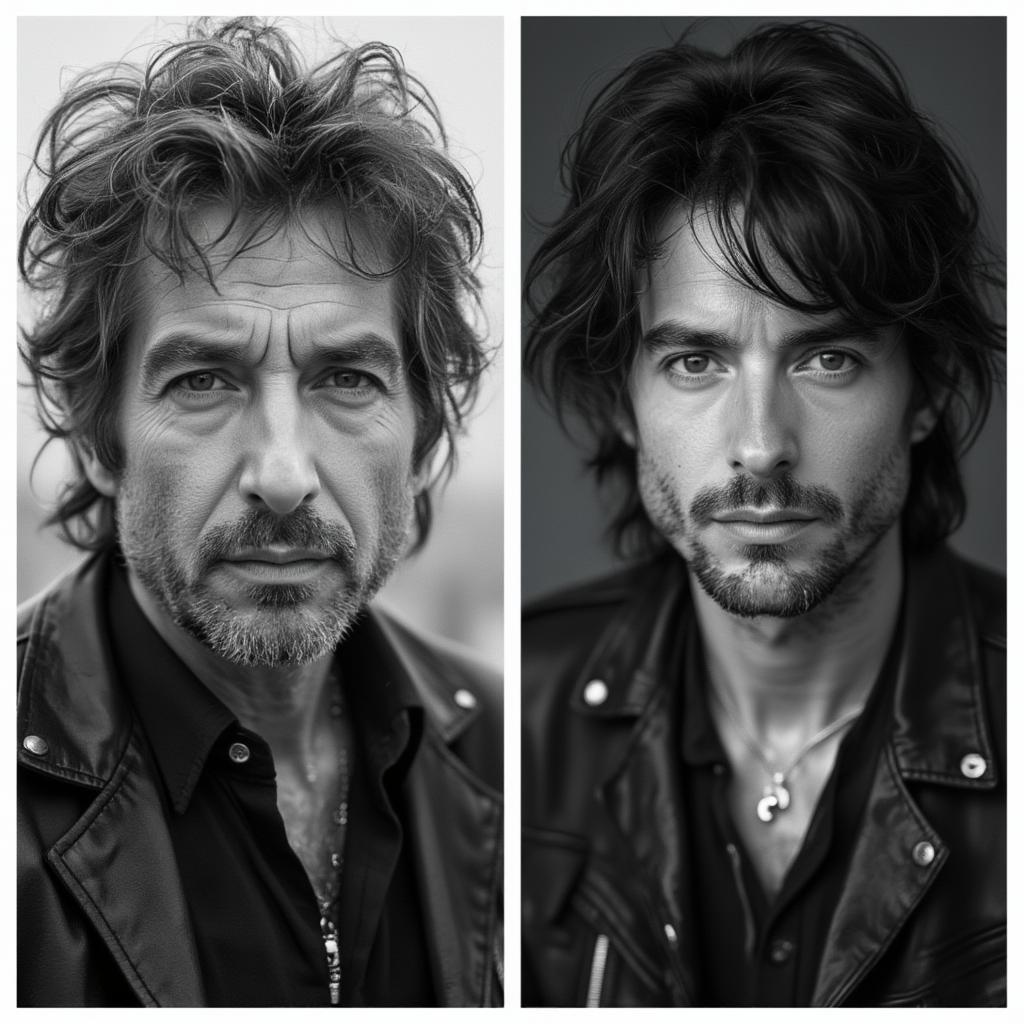The Tangled Highway: Bob Dylan and Townes Van Zandt’s Converging Paths

Bob Dylan and Townes Van Zandt, two enigmatic figures in the tapestry of American folk music, stand as pillars of poetic storytelling and raw, unfiltered emotion. While their paths rarely directly intersected, their influence on each other and the broader musical landscape is undeniable, a testament to the enduring power of song. Both artists, though distinct in style and temperament, shared a profound commitment to crafting narratives that resonated with the human condition, exploring themes of love, loss, societal ills, and the relentless search for meaning in a world often devoid of it. Their music, born from the depths of personal experience and a keen observation of the world around them, continues to captivate audiences decades later.
Troubadours of the American Soul: Shared Themes and Diverging Styles
Dylan, the chameleon-like poet laureate of rock, and Van Zandt, the introspective troubadour haunted by inner demons, embarked on parallel journeys fueled by a shared fascination with the American folk tradition. Both drew inspiration from Woody Guthrie’s stark portrayals of working-class struggles and the timeless ballads passed down through generations. However, their interpretations of this heritage diverged dramatically, shaping their unique artistic voices. Dylan, with his wordplay, harmonica riffs, and restless experimentation, became a voice of a generation, challenging conventions and pushing the boundaries of folk music. Van Zandt, on the other hand, remained steadfast in his commitment to a more traditional, stripped-down sound, his fingerpicked guitar and melancholic vocals laying bare the fragility of the human spirit.
The Weight of Words: Lyrical Genius in Different Keys
Dylan’s lyrics are a whirlwind of imagery, allusion, and social commentary, often veiled in ambiguity and open to interpretation. He is a master of wordplay, weaving intricate tapestries of language that challenge listeners to decipher their hidden meanings. Van Zandt, in contrast, favored a more direct and confessional approach, his lyrics characterized by a stark honesty and emotional vulnerability. His songs are populated by outcasts, drifters, and broken-hearted lovers, their stories told with a poignant simplicity that cuts to the core of human experience. While Dylan dazzled with his verbal dexterity, Van Zandt pierced the soul with his raw emotional power.

Two Sides of the Same Coin: Influence and Inspiration
Did Dylan directly influence Van Zandt? Did Van Zandt impact Dylan’s trajectory? These questions remain subject to debate among music historians and fans alike. While no concrete evidence exists of significant personal interaction, the shared lineage of their music and the echoes of similar themes in their work suggest a subtle, perhaps unspoken, dialogue between the two artists. Both tapped into the same wellspring of American folklore, transforming it into something uniquely their own. Van Zandt, though deeply respectful of Dylan’s talent, carved his own distinct path, never seeking to emulate the elder statesman of folk.
Beyond Imitation: A Shared Legacy of Songwriting
While some may point to superficial similarities, the true connection between Dylan and Van Zandt lies in their shared commitment to the art of songwriting. Both believed in the power of music to transcend boundaries, to tell stories that resonated with universal truths. They were chroniclers of the human condition, capturing the joys and sorrows, the triumphs and failures, of ordinary people in extraordinary circumstances. Their influence can be seen in countless artists who followed in their footsteps, carrying the torch of authentic, heartfelt songwriting into the 21st century.
Pancho and Lefty: A Testament to Enduring Friendship and Artistic Respect
The song “Pancho and Lefty,” written by Townes Van Zandt and famously covered by Emmylou Harris and Willie Nelson, became a major hit and cemented Van Zandt’s place in the pantheon of great American songwriters. While not directly related to Bob Dylan, the song’s themes of loyalty, betrayal, and the fleeting nature of fame resonate with the spirit of both Dylan and Van Zandt’s work. It speaks to the inherent struggles of the artistic life, the price of fame, and the enduring power of friendship in the face of adversity. The song’s success further underscores the enduring appeal of the kind of raw, honest storytelling that both Dylan and Van Zandt championed.
“To Live is to Fly”: Navigating the Troubled Waters of Life and Art
Both Dylan and Van Zandt grappled with their own personal demons, their struggles often reflected in their music. Dylan’s relentless reinvention and Van Zandt’s self-destructive tendencies were two sides of the same coin, reflecting the inherent challenges of a life dedicated to art. They both understood that “to live is to fly,” as Van Zandt sang, acknowledging the inherent risks and rewards of embracing a life less ordinary. Their music serves as a testament to the human spirit’s capacity for resilience, even in the face of overwhelming adversity.

The Highway Still Calls: Bob Dylan and Townes Van Zandt’s Enduring Legacy
Bob Dylan and Townes Van Zandt, two seemingly disparate figures united by their dedication to the power of song, left an indelible mark on American music. Their individual paths, though rarely intersecting, converged in a shared commitment to authenticity, poetic expression, and the exploration of the human condition. They were poets, prophets, and storytellers, their music continuing to resonate with generations of listeners who find solace and inspiration in their timeless words and melodies. Bob Dylan and Townes Van Zandt remain essential voices in the ongoing conversation about life, love, and the enduring search for meaning in a world often filled with chaos and uncertainty.
In conclusion, Bob Dylan and Townes Van Zandt, though distinct in style, share a common thread of profound artistry that transcends genre and generation. Their music continues to inspire, provoke, and comfort, reminding us of the enduring power of the human spirit and the transformative potential of song. Their legacy is not just a collection of albums and performances, but a living testament to the power of music to connect us to something larger than ourselves.




